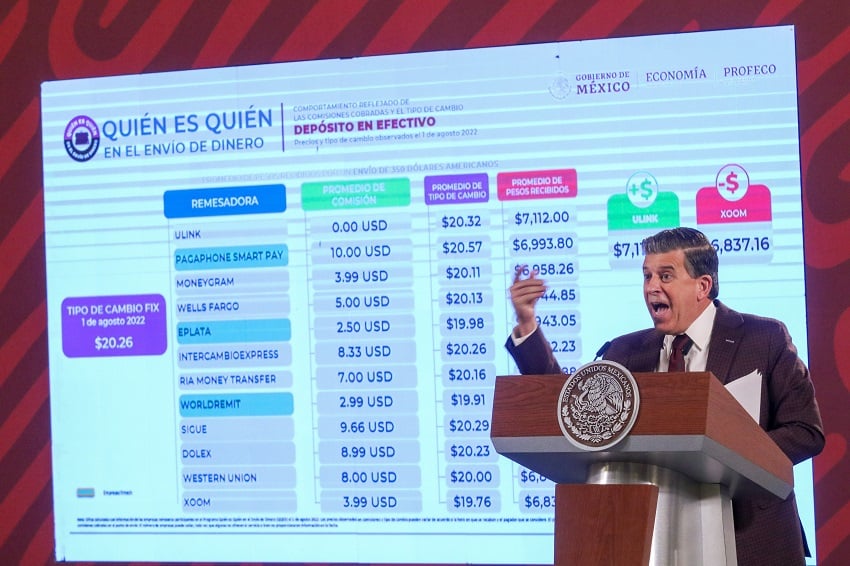Remittances to Mexico continue to break records with US $5.56 billion sent in August — the highest ever figure for that month — but the strong peso means their purchasing power is falling.
August’s figure represented an annual increase of 8.6% and brought total remittances for January-August up to US $41.46 billion, a 9.3% increase from the same period in 2022, according to data from the Bank of Mexico (Banxico).

There were 105.46 million individual transfers in this period, up 8.29% from the year before, while the average amount of each transfer increased by 0.91%, to US $393.
Mexico has seen a steady upward trend in remittances received since the beginning of the COVID-19 pandemic in March 2020, with nearly 40 consecutive months of year-on-year increases.
The growth largely reflects the strength of the U.S. economy. The United States is the source of more than 95% of remittances to Mexico, according to 2021 statistics analyzed by the Wilson Center, and U.S. wages are up to ten times higher than equivalent wages in Mexico.
Economists estimate that remittances account for between 3.5% and 4% of Mexico’s GDP. President López Obrador has called the 38 million Mexican workers in the U.S. “living heroes” who support about 10 million poor families.

However, high inflation in the U.S. also affects Mexican workers there, leaving them with less disposable income. Although August’s remittances were the highest ever for that month, they were down 1.8% from the month before.
Furthermore, the appreciation of the Mexican peso this year has eroded the purchasing power of remittances sent in dollars. Valued in pesos, August’s remittances in fact showed a 12.5% fall from August 2022.
Several analysts who spoke to the newspaper El Financiero warned that a flagging U.S. economy could bring the total value of remittances to Mexico down further over the coming months.
“If there is a recession in the U.S., it is inevitable that it will negatively affect Mexico’s income from remittances,” said Jesús Cervantes, director of economic statistics at the Center for Latin American Monetary Studies (CEMLA). “Even if the peso depreciates and domestic inflation continues to fall in Mexico, the annual comparisons will register year-on-year falls measured in pesos.”
With reports from El Financiero and The San Diego Union-Tribune
